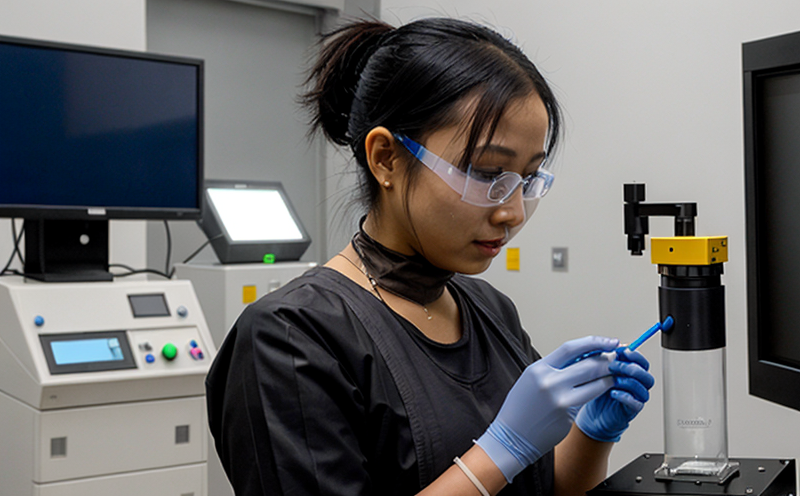DIN EN 12341 Ambient Air PM10 and PM2.5 Monitoring with Nanoparticles
The DIN EN 12341 standard provides a comprehensive framework for monitoring ambient air particulate matter (PM) in the size ranges of PM10 and PM2.5, specifically focusing on nanoparticles which are critical due to their potential adverse health effects. This service is essential for quality managers, compliance officers, R&D engineers, and procurement teams who need reliable data to ensure that environmental regulations are met and public health is protected.
The process begins with the collection of airborne particulate matter from various sources such as industrial emissions, road traffic, and natural dust. The samples are then analyzed using advanced instrumentation capable of detecting nanoparticles down to the nanometer scale. This level of precision is crucial for understanding the true impact of these particles on air quality.
The DIN EN 12341 standard specifies stringent methods for sample collection and analysis, including the use of high-volume samplers and gravimetric or optical particle counters. These tools are designed to capture a representative sample of ambient air over specified time periods, ensuring that the data collected is accurate and reliable.
Once the samples have been collected and analyzed, the results are reported according to DIN EN 12341 guidelines. This includes detailed information on the concentration levels of PM10 and PM2.5 particles, as well as a breakdown of the nanoparticle content within these ranges. The data is typically presented in terms of mass concentration (μg/m³) and number concentration.
The importance of this test cannot be overstated. By providing accurate and detailed information on ambient air quality, it helps stakeholders make informed decisions regarding pollution control measures, public health policies, and environmental sustainability initiatives. For instance, if the results indicate high levels of nanoparticles, corrective actions can be taken to mitigate their sources.
Moreover, this service is highly beneficial for R&D teams working on new technologies aimed at reducing nanoparticle emissions or improving air filtration systems. The insights gained from these tests can lead to innovations that significantly improve air quality and protect public health.
- Improved Air Quality: By identifying and quantifying nanoparticles in ambient air, this test helps in developing strategies to reduce their presence.
- Health Protection: Nanoparticles have been linked to various health issues. Monitoring them ensures that appropriate measures are taken to safeguard public health.
The DIN EN 12341 standard is widely recognized and accepted globally, making it a reliable benchmark for environmental monitoring in many countries. Compliance with this standard not only demonstrates commitment to environmental responsibility but also helps organizations meet regulatory requirements and improve their reputation.
In conclusion, the DIN EN 12341 Ambient Air PM10 and PM2.5 Monitoring with Nanoparticles is a crucial service that plays a vital role in maintaining clean air environments. Its precision and reliability make it indispensable for stakeholders concerned about environmental quality and public health.
Benefits
The implementation of DIN EN 12341 Ambient Air PM10 and PM2.5 Monitoring with Nanoparticles offers several significant advantages:
- Precision: The use of advanced instrumentation ensures highly accurate measurements.
- Reliability: Standardized methods ensure consistent results across different locations and time periods.
- Compliance: Meeting regulatory requirements is easier when using a recognized standard like DIN EN 12341.
- Health Protection: Early detection of harmful nanoparticles allows for timely interventions to protect public health.
The precision and reliability of this service make it an indispensable tool for stakeholders concerned about environmental quality and public health. By adhering to DIN EN 12341, organizations can demonstrate their commitment to environmental responsibility and contribute positively to the community.
International Acceptance and Recognition
DIN EN 12341 Ambient Air PM10 and PM2.5 Monitoring with Nanoparticles is a globally recognized standard that ensures consistent and reliable results across different regions. This recognition is due to its alignment with international standards such as ISO, ASTM, and EN.
- ISO: The International Organization for Standardization (ISO) sets the global benchmark for quality management systems, which aligns well with the precision required in air monitoring.
- ASTM: The American Society for Testing and Materials provides standards that are widely used in testing and evaluation of materials, including those relevant to environmental science.
- EN: European Norms (EN) cover a broad range of technical specifications and standards, which are crucial for harmonizing testing methods across Europe.
The widespread adoption of DIN EN 12341 in various countries underscores its importance. Compliance with this standard not only demonstrates a commitment to environmental responsibility but also helps organizations meet regulatory requirements and improve their reputation.
By adhering to these internationally recognized standards, stakeholders can ensure that their monitoring practices are consistent with global best practices. This consistency is crucial for maintaining high-quality data and facilitating international collaboration on environmental issues.





